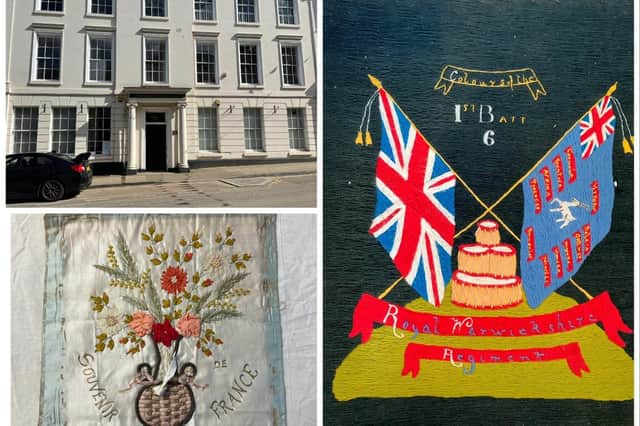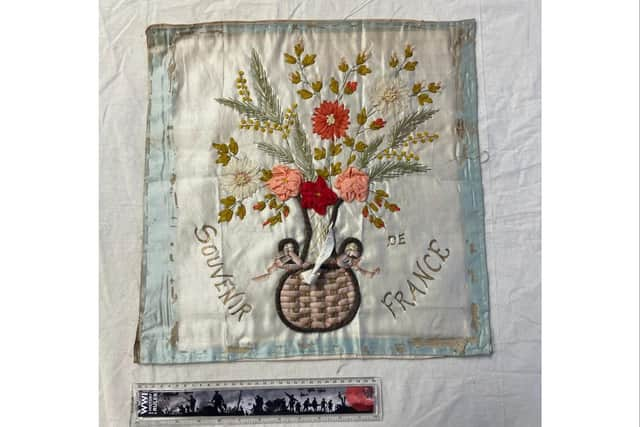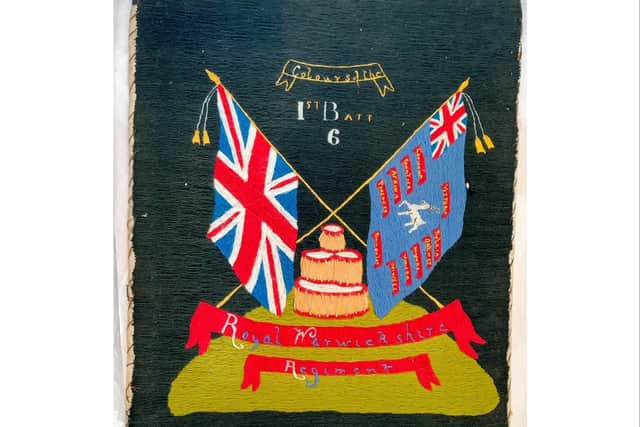Warwick exhibition shines light on how injured Warwickshire soldiers found solace in embroidery


An exhibition will be opening at the Fusilier Museum in Warwick this half term focusing on a little known aspects of the lives of Coventry and Warwickshire soldiers.
During the First World War, two million soldiers were injured, a quarter of whom experienced life changing wounds that saw them discharged from the army.


Advertisement
Hide AdAdvertisement
Hide AdTo aid their recovery, many of these with long-term conditions were trained to make embroidery.
A spokesperson from the Fusiliers Museum said: “This had both a therapeutic effect and for a few also an economic value, as unfit for any other work, some retired veterans made needlework to sell.
“The War Office feared that learning to embroider could ‘effeminise’ the men, but the positive results from the activity not only provided a focus for men often in constant pain but restored their sense of dignity and purpose as they lay helpless in hospital beds.
“By the Second World War, commercial therapeutic embroidery packs were made available for injured soldiers.”


Advertisement
Hide AdAdvertisement
Hide AdThe museum is displaying some of the work done by soldiers of the regiment and other embroideries sent home.
In one example, Albert Randall brought back an embroidered souvenir from France for his sweetheart Lily on what was to be the very last occasion of them being together.
The exhibition also shows the work of Austen Albert Ward of Asted in Birmingham, who lost part of his leg in the last months of the First World War and made several embroidery pieces while in hospital.
Some works by the soldiers were created during long periods of inactivity during conflicts – these were complex embroideries that including the flags (‘colours’), drums, antelope mascot and royal crown symbols.
The antelope insignia of the Warwickshire regiment is included in many pieces.
Advertisement
Hide AdAdvertisement
Hide AdA spokesperson from the Fusiliers Museum said: “Some of the embroidery is of high quality, others exhibit a folk-art charm, but each has its story to tell.
“Spanning the period from the Boer War 1899-1902 to the Suez Crisis in 1955, this exhibition is a visual spectacle which will interest those fascinated by the quirkier aspects of well-known history, those who enjoy and engage in embroidery and needlework and others who would like to explore the personal histories of the soldiers of the county regiment who fought through the Word Wars.”
‘By A Thread – Embroidery and Needlework in Wartime’ exhibition opens on February 10 and is included with admission.
For more information go to: https://fusiliermuseumwarwick.com/